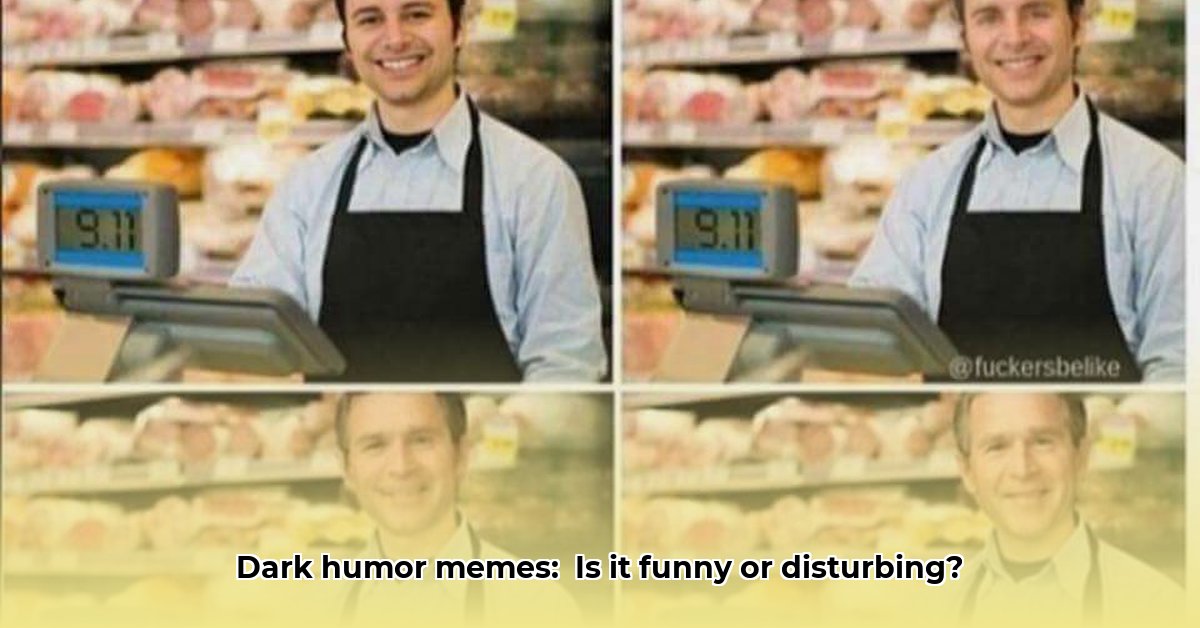
Why We Find the Grim So Funny
Ever chuckled at a meme about death, disaster, or the sheer absurdity of existence? You're not alone. Dark humour memes – those digital packages of morbid amusement – are everywhere, sparking conversations and raising eyebrows. But what's driving this trend? Is it simply morbid fascination, or is there a deeper psychological reason why we find these memes so appealing? A recent study suggests that dark humour serves as a coping mechanism for managing anxieties, a way to wrestle with difficult emotions and find fleeting moments of control in a chaotic world. It's a form of emotional release.
A significant portion of the popularity of dark humour memes stems from their relatability. They tap into universal human experiences – job stress, relationship woes, existential dread – transforming them into something darkly humorous. This shared experience fosters a sense of community and belonging, a silent acknowledgment of shared struggles amongst those who "get it." This shared, unspoken understanding is a powerful adhesive in online communities. This means that shared dark humour can be particularly effective amongst people who share struggles with chronic conditions, trauma or serious life challenges - it helps them find catharsis.
A Shared Language of... Despair?
The power of dark humour memes lies in their relatability. They expose the universal human experiences of struggle – job stress, relationship dramas, existential angst – transforming the heavy into the humorous. These aren’t merely jokes; they are a shared lexicon for our collective anxieties, offering a sense of solidarity and validation in our shared suffering. Seeing our own struggles mirrored, albeit in a twisted and comical light, makes them feel slightly less daunting. A meme depicting a character defeated by a Monday morning workload, captioned "Me, pretending to be productive," perfectly captures this phenomenon. The humor arises from the shared understanding, the collective nod of recognition. It's a way to find common ground in unpleasant experiences.
The Double-Edged Sword of LOLs
However, the line between dark humour and genuine offensiveness is exceedingly fine. What one person finds hilarious, another may consider deeply hurtful or insensitive. This presents a significant challenge. This sensitivity challenge highlights the importance of context and audience awareness. For example, a meme trivialising a tragic event could deeply offend those affected. The presentation and intention behind the meme are key here.
It's crucial to be mindful of the potential to inadvertently normalise harmful behaviour or trivialise serious issues. The context and delivery are paramount. This brings up a crucial question: how do we appreciate the humour without contributing to something harmful? It requires mindful consumption and creation, respecting the potential for impact while also appreciating the purpose of this kind of humour.
Navigating the Moral Minefield
So, how do we navigate this ethical tightrope? How do we appreciate dark humour without inadvertently causing harm? It requires a multifaceted approach. It's not about censorship; it's about responsible engagement. Creators must consider the potential repercussions of their creations, platforms need more sophisticated content moderation tools, and users need to become more critical and discerning consumers of online content. It's about balance – enjoying the humour while remaining acutely aware of the potential for harm.
Practical Steps for Responsible Meme Sharing
Here's a guide to responsible meme-sharing:
- Think Before You Share: Pause before sharing and consider the potential impact on others. Could it offend or cause hurt?
- Understand the Context: Ensure full comprehension of the meme's meaning before sharing. Misinterpretations are common.
- Encourage Open Discussion: Engage in conversations about memes and their impact.
- Report Inappropriate Content: Report anything that crosses the line into hate speech or harassment.
The future of dark humour memes hinges on our collective responsibility. It is a dynamic conversation demanding active participation. It’s not about eliminating dark humour entirely, but about harnessing its power thoughtfully and responsibly.
How to Ethically Create Dark Humor Memes Without Causing Offense
Creating dark humour memes ethically requires careful consideration. Here's a step-by-step guide:
- Know Your Audience: Who are you targeting? Will they appreciate the humour, or will it fall flat or worse, cause offence?
- Context is Crucial: The same joke can be hilarious in one setting and deeply offensive in another. Be mindful of the overall atmosphere.
- Prioritise Consent: Obtain consent if the meme features specific people or events. Respect others' rights and feelings.
- Avoid Stereotypes: Don't rely on harmful stereotypes. There are more responsible ways to achieve humour.
- Seek Feedback: Test the meme on trusted friends before wider distribution.
- Be Ready to Apologise: If the feedback is negative, apologise and remove the meme.
- Remember the Human Element: There are real people behind every meme. Always remember this fundamental truth.
The ethical creation and consumption of dark humour memes calls for ongoing dialogue and a heightened awareness of the potential for both positive and negative impacts. The line between edgy comedy and offensive content is thin.